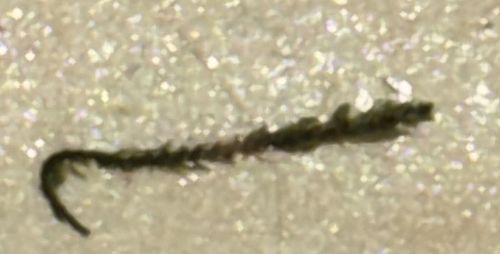Household Casebearer, Plaster Bagworm
Scientific Name: Phereoeca uterella (often mistaken for Tinea pellionella, the Case-making Clothes Moth, which has a flatter case)
Order & Family: Lepidoptera (Moths), Tineidae (Fungus Moths/Clothes Moths)
Size: Larval case: 10-15 mm (0.4-0.6 inches) long; Adult moth: wingspan of about 10-14 mm (0.4-0.55 inches).

Natural Habitat
Indoors, commonly found in homes, museums, and other buildings. They prefer dark, undisturbed areas such as under furniture, in closets, behind appliances, and in attics or basements, especially in damp environments.
Diet & Feeding
Larvae feed on a variety of organic materials, including spiderwebs, hair, wool, silk, felt, dried insects, pantry goods (particularly flour and cereals), and molds. They are also known to graze on fungi and mildew, which can sometimes be beneficial.
Behavior Patterns
Case-bearing insects that construct a portable case out of silk and environmental debris (dust, lint, fabric fibers, sand, etc.). The larva lives inside this case and carries it everywhere. They are slow-moving and often feed in secluded, dark areas. The adult stage is a small, typically brownish moth that does not feed.
Risks & Benefits
Potential risks include damage to fabrics, carpets, furs, and other natural fibers, as well as contamination of food products. They are generally considered nuisance pests. Benefits are minimal but can include feeding on mold and providing a food source for other insects in natural systems, though their presence indoors usually signifies a pest issue.
Identified on: 8/27/2025